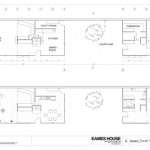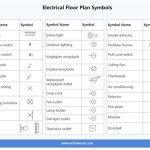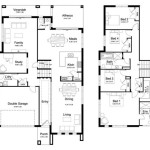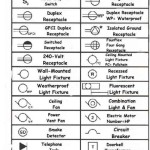Exploring the Enduring Appeal of Spanish Home Plans
Spanish home plans, also known as Spanish Colonial or Mediterranean home plans, evoke a sense of warmth, history, and architectural elegance. Originating from the Spanish colonization of the Americas, these designs have evolved over centuries, incorporating regional influences and modern amenities. Their distinct characteristics, rooted in practicality and aesthetic appeal, continue to resonate with homeowners seeking a unique and inviting living space.
The adoption of Spanish architectural elements in the United States, particularly in the Southwest and California, gained momentum in the early 20th century. Architects drew inspiration from historical missions and haciendas, adapting the style to suit modern lifestyles and available materials. This adaptation resulted in a variety of sub-styles, each possessing its own distinct characteristics while maintaining the core principles of Spanish design. These styles offer flexibility in terms of size, layout, and level of ornamentation, making them adaptable to various climates and personal preferences.
Understanding the defining characteristics of Spanish home plans is crucial for appreciating their enduring appeal and making informed decisions when considering this architectural style for a new home or renovation project. The following key elements showcase why these designs are consistently popular and offer a blend of historical charm and modern functionality.
Key Features of Spanish Home Plans
Spanish home plans are identifiable through a combination of architectural details and construction materials. These elements contribute to the overall aesthetic and functionality of the design, creating a cohesive and visually appealing residence.
Exterior Features: The exterior of a Spanish-style home typically features stucco walls, often painted in white or earth tones. Stucco provides excellent insulation properties, helping to regulate temperature and reduce energy consumption. Low-pitched red tile roofs are another hallmark of the style, adding a vibrant splash of color and providing resistance to the elements. Arched doorways and windows are common, creating a sense of elegance and inviting natural light into the interior. Courtyards and patios are often incorporated into the design, providing outdoor living spaces that are integral to the Spanish lifestyle. Balconies, often adorned with decorative ironwork, add visual interest and create opportunities for enjoying outdoor views.
Interior Features: Inside, Spanish homes often feature open floor plans that encourage social interaction and create a sense of spaciousness. Hardwood or tile flooring is common, adding warmth and durability. Exposed wooden beams, or vigas, are a defining characteristic, adding rustic charm and visual texture to the ceilings. Fireplaces, often clad in stone or tile, serve as focal points in living areas, providing warmth and a sense of comfort. Wrought iron details are frequently incorporated into lighting fixtures, stair railings, and other decorative elements, adding a touch of elegance and sophistication. Courtyards and patios are often accessible from multiple rooms, blurring the lines between indoor and outdoor living spaces.
Materials: The materials used in Spanish construction contribute significantly to the overall aesthetic and durability of the home. Stucco is the primary exterior cladding, providing a smooth and durable surface. Red clay tiles are used for roofing, offering resistance to fire and the elements. Wood is used for framing, beams, and trim, adding warmth and natural beauty. Stone is often used for accents, such as fireplaces and exterior walls, adding texture and visual interest. Wrought iron is used for decorative elements, such as railings and lighting fixtures, adding elegance and sophistication.
Variations and Adaptations of Spanish Home Plans
While sharing core characteristics, Spanish home plans encompass various sub-styles, each reflecting unique regional influences and design preferences. Understanding these variations allows homeowners to choose a style that best suits their individual tastes and requirements.
Spanish Colonial: This is the most authentic and historically accurate representation of the Spanish style. It emphasizes simplicity and functionality, with minimal ornamentation and a focus on natural materials. Spanish Colonial homes typically feature thick stucco walls, simple arched doorways, and red tile roofs. Interior spaces are often characterized by exposed wooden beams, hardwood floors, and minimal decorative elements. This style is well-suited to warm climates and those seeking a minimalist aesthetic.
Mediterranean Revival: This style is a more ornate and romanticized version of the Spanish style. It incorporates elements from Italian and Moorish architecture, resulting in a more elaborate and decorative design. Mediterranean Revival homes often feature elaborate stucco details, decorative tiles, and wrought iron accents. Interior spaces are often characterized by high ceilings, arched doorways, and intricate detailing. This style is well-suited to those seeking a more luxurious and visually striking home.
Spanish Mission Revival: Inspired by the architecture of the California missions, this style combines Spanish and Native American influences. Spanish Mission Revival homes typically feature stucco walls, red tile roofs, and arched doorways. However, they also incorporate unique elements such as bell towers, covered walkways, and courtyards with fountains. Interior spaces are often characterized by spacious rooms, exposed wooden beams, and simple decorative elements. This style is well-suited to those seeking a connection to history and a sense of tranquility.
Modern Spanish: This style represents a contemporary interpretation of the Spanish style, incorporating modern features and materials while maintaining the core aesthetic principles. Modern Spanish homes often feature clean lines, large windows, and open floor plans. They may incorporate modern materials such as concrete and steel, while still maintaining the use of stucco and red tile. Interior spaces are often characterized by minimalist décor, natural light, and a focus on functionality. This style is well-suited to those seeking a contemporary home with a touch of Spanish charm.
Benefits of Choosing a Spanish Home Plan
Beyond their aesthetic appeal, Spanish home plans offer a range of practical benefits that contribute to a comfortable and sustainable living environment. These advantages include energy efficiency, durability, and adaptability to various climates and lifestyles.
Energy Efficiency: The use of stucco walls and red tile roofs provides excellent insulation properties, helping to regulate temperature and reduce energy consumption. The thick walls help to keep the interior cool in the summer and warm in the winter, reducing the need for air conditioning and heating. Courtyards and patios also provide natural ventilation, further reducing energy costs. The incorporation of passive solar design principles, such as orienting the home to maximize sunlight during the winter and minimize it during the summer, can further enhance energy efficiency.
Durability and Low Maintenance: The use of durable materials such as stucco, tile, and stone ensures that Spanish homes are built to last. Stucco is resistant to fire, insects, and rot, while tile is resistant to fire and weathering. The low-maintenance nature of these materials reduces the need for frequent repairs and upkeep. The simple designs and lack of elaborate ornamentation also contribute to the overall durability and ease of maintenance.
Adaptability and Versatility: Spanish home plans can be adapted to various climates and lifestyles. The flexibility of the design allows for customization to meet the specific needs of the homeowner. Courtyards and patios can be used for outdoor living and entertaining, while spacious interiors can accommodate families of all sizes. The open floor plans are well-suited to modern lifestyles, promoting social interaction and creating a sense of community. The various sub-styles of Spanish architecture offer further flexibility, allowing homeowners to choose a design that best suits their individual tastes and preferences.
Aesthetic Appeal: The timeless elegance and historical charm of Spanish home plans create a visually appealing and inviting living space. The warm colors, natural materials, and distinctive architectural details evoke a sense of comfort, history, and sophistication. The incorporation of courtyards and patios creates a connection to nature, fostering a sense of well-being and tranquility. The unique character of Spanish homes sets them apart from other architectural styles, making them a desirable choice for homeowners seeking a distinctive and memorable residence.
The enduring appeal of Spanish home plans lies in their ability to blend historical charm with modern functionality. Their distinctive architectural features, durable materials, and adaptability to various climates and lifestyles make them a desirable choice for homeowners seeking a unique and inviting living space. As styles evolve and materials advance, the core principles of Spanish design continue to be reinterpreted and adapted, ensuring their relevance and appeal for generations to come.

Small Spanish Contemporary House Plan 61custom Modern Plans

Spanish House Plans Monster
5 Bedroom Spanish Style House Plan With 4334 Sq Ft 134 1339

Spanish House Plan 1 Story Coastal Style Home Floor Mediterranean Plans New

Spanish Colonial Home Plans Sater Design Collection

Maywood Spanish Style Home Plan 026d 1391 House Plans And More

Spanish House Plans Hacienda And Villa Style

Spanish Style Home Floor Plans

Spanish Style House Plans Floor

Spanish Style House Plans Home Designs The Designers








